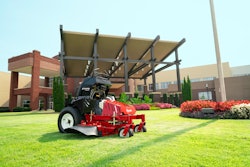
responses submitted by Jon Morrison, President of America, WABCO
Automation & Smart Systems
What smart systems or components does your company currently offer? If they are application or industry specific, include that detail in the explanation.
WABCO offers an array of Advanced Driver Assist Systems (ADAS) such as OnGuardMAX, OnGuardACTIVE, OnLaneASSIST, OnCity Urban Turning Assist, TailGuard, OnSide and OptiPace. ADAS technologies increase the safety of the vehicle and its occupants, as well as the vehicles and people around them.
- OnGuardMAX is an active safety system that provides up to full braking even from highway speed to help avoid impending rear-end collisions.
- OnGuardACTIVE is an active safety system that helps prevent accidents by warning drivers of potential rear-end collisions, and intervenes if needed. WABCO has sold more than 450,000 OnGuard systems. Utilizing OnGuardACTIVE, fleets report up to an 87% reduction in rear-end collisions, and up to 95% reduction in rear-end accident costs. According to Federal Motor Carrier Safety Administration (FMCSA) studies, OnGuard ACTIVE can prevent up to $2.5 billion in crash-related costs per year.
- OnLaneASSIST combines unique active-steering technology with a forward-looking camera for active lane correction to help avoid potential collisions and run-off-road accidents. OnLaneASSIST was introduced at the North American Commercial Vehicle Show in September 2017.
- OnCity Urban Turning Assist is a unique single-sensor solution that delivers the industry's widest field-of-view – up to 180 degrees – to help protect pedestrians and cyclists in city traffic. OnCity Urban Turning Assist alerts the driver of a potential collision with unprotected road users before and during a turning maneuver and, should the drive fail to take corrective action, its active braking system can autonomously apply the brake to prevent collisions.
- TailGuard is a blind-spot detection solution for trucks and buses. Reversing a trailer is one of the most dangerous truck operating procedures, accounting for up to 35% of incidents involving trailer damage and up to 40% of fatal accidents. TailGuard reduces risks during reversing by detecting small, large, static and moving objects in the blind spot behind the trailer, and automatically stopping the trailer at a safe distance.
- OnSide is an advanced blind spot detection system for commercial trucks and trailers. The radar-based system alerts drivers of the presence of a moving vehicle in a truck’s blind spot and provides a side collision warning to reduce the risk of accidents. WABCO OnSide’s radar sensor enables a 160-degree field of view and provides coverage for up to 65% of a standard 53-ft. (16.2 m) trailer. The system performs reliably even in low visibility conditions such as darkness, fog, rain or snow.
- OptiPace is a predictive economic cruise control that offers fuel saving potential by adjusting vehicle speed to road topography.
How will that portfolio be expanding in the near future? What customer/industry demands drove these future developments?
The technology advances we are seeing, and expect to see going forward, are the building blocks to autonomous vehicles of the future, but along the way the technologies we’re developing and bringing to market are helping improve safety and fuel economy.
The National Highway Traffic Safety Administration says that 94% of crashes are tied to a human choice or error. The driver will play a critical role in the commercial vehicle industry for the foreseeable future, so we remain focused on the innovation and development of technologies to enhance driver effectiveness and safety.
In October 2017, WABCO introduced OnSide, an advanced blind spot detection system for commercial trucks and trailers. The radar-based system alerts drivers of the presence of a moving vehicle in a truck’s blind spot and provides a side collision warning to reduce the risk of accidents. WABCO OnSide’s radar sensor enables a 160-degree field of view and provides coverage for up to 65% of a standard 53-ft. trailer. The system performs reliably even in low visibility conditions such as darkness, fog, rain or snow.
OnSide helps improve commercial vehicle safety by alerting drivers to the potential of a side collision with a vehicle traveling in a truck’s “blind spot,” an area in the adjacent lane which drivers cannot see in rearview or side view mirrors. The system uses advanced short-range radar to detect a moving vehicle in the blind spot and then alerts the driver with a visual signal.
When used in conjunction with WABCO’s OnLaneASSIST lane keeping assist system, OnSide has the capability to go beyond warning to enable active collision avoidance. In that case, if a lane change is initiated and OnSide detects a vehicle in the adjacent lane, OnLaneASSIST applies a correction torque to the steering wheel to return the vehicle towards the lane center. WABCO’s lane keeping assist system also smoothly releases the torque as soon as the proper driving path is re-established.
WABCO’s acquisition of R.H. Sheppard in 2017 allows us to have industry-leading steering technologies for commercial vehicles in-house. In September 2017 we introduced OnLaneASSIST, WABCO’s first Advanced Driver Assistance System based on Sheppard’s U.S. market-leading steering technology integrated with Nexteer’s steering automation technology.
Sheppard provides key capabilities for lateral vehicle control through active steering. OnLaneASSIST combines that with the ability to have longitudinal control through active braking, stability and suspension controls. Full dynamic control of commercial vehicles – lateral and longitudinal – is necessary to progressively achieve the industry’s vision of autonomous driving.
How do you see the timeline of vehicle automation unfolding in the coming years?
It’s difficult to estimate when we will see autonomous vehicles on a measurable scale. Many of the technologies needed for autonomous vehicles are available. Full automation (level 4) has already been demonstrated and is being tested on designated stretches of highways.
The technology is in place to be there, but the infrastructure isn’t there yet. The level of sophistication isn’t there yet. There also are legal liability issues that need to be addressed.
Whether we’ll see autonomous trucks on U.S. roads and highways in significant volumes in 5 years, 10 years, or longer, I really can’t say. But what’s important now is the technologies leading up to that point are making the roads safer today and are making for a better driving experience today. And we continue to develop and bring to market the building blocks toward autonomy and drive progress that helps the industry.
We expect the driver will continue to play a critical role in the commercial vehicle industry for the foreseeable future, but there is a driver shortage. According to the American Trucking Associations, the industry is now short 50,000 drivers and could hit 175,000 by 2024. WABCO technology, such as OnLaneASSIST, helps the drivers and makes the vehicle safer and easier to drive.




















